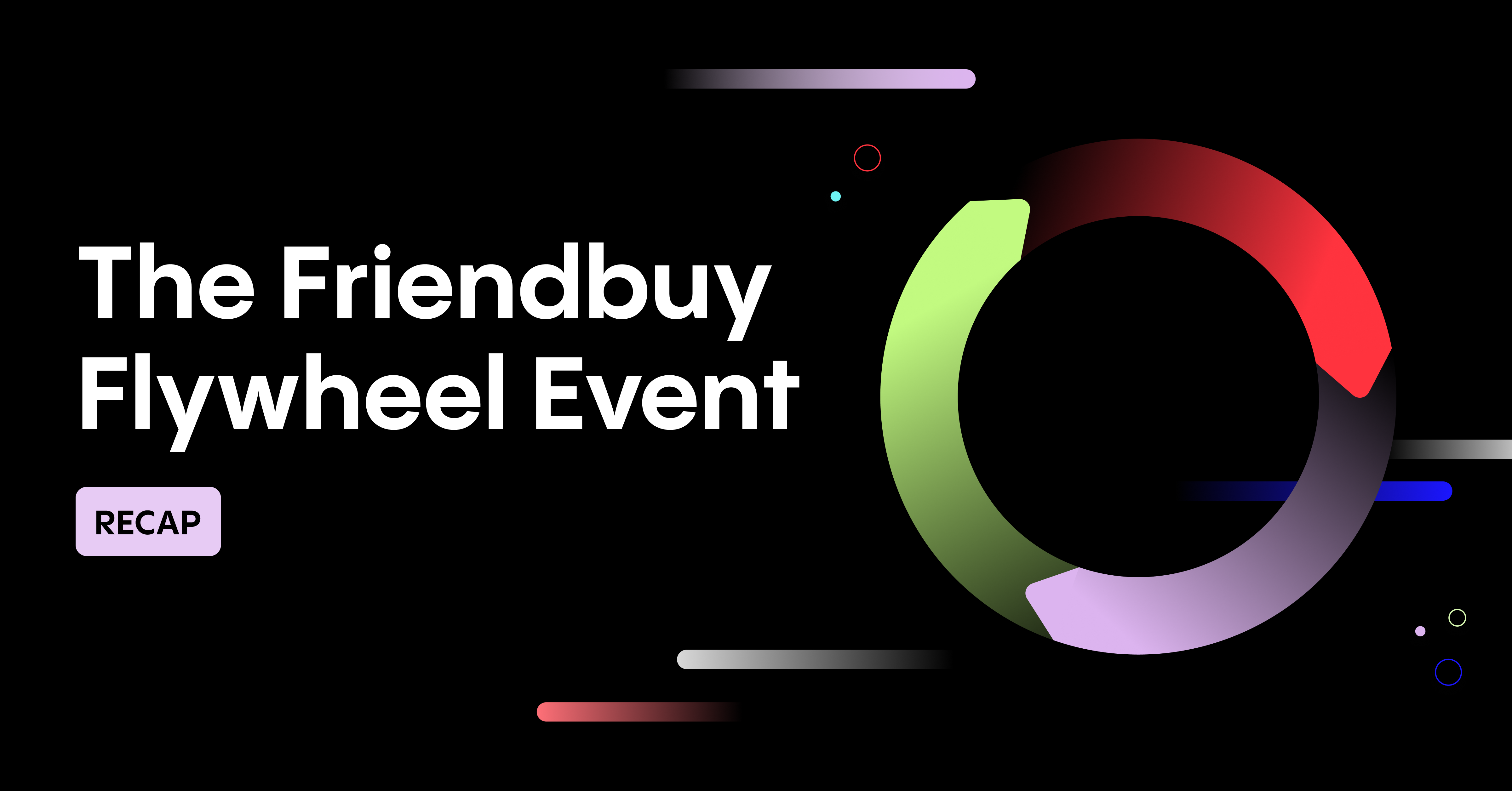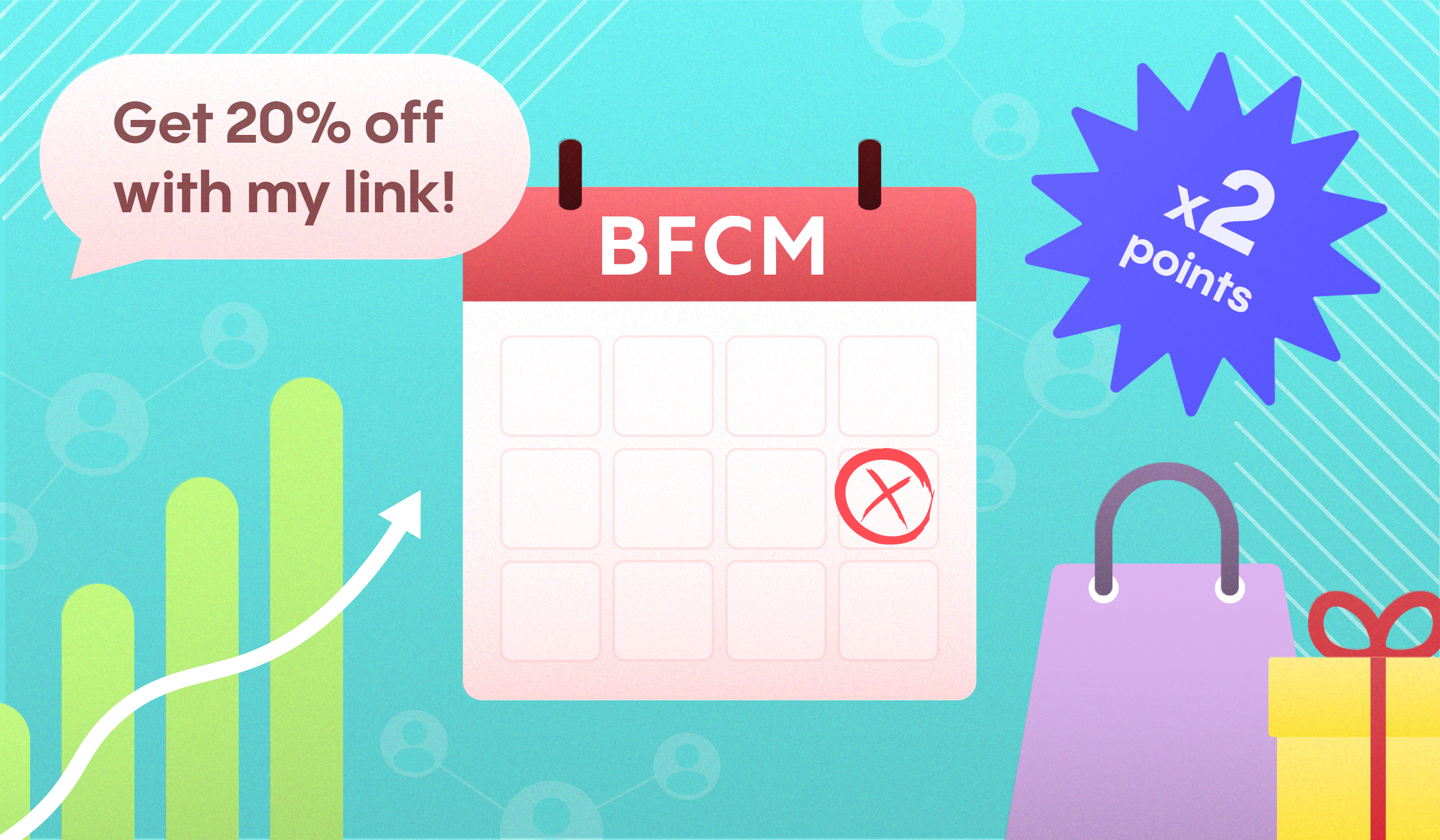Any business can leverage word-of-mouth advocacy to reach new customers and drive sales. But knowing exactly when to start a referral program can be a little tricky.
So when should you actively strategize to implement a comprehensive customer referral program? At what point does launching a referral program justify the cost, time investment, and other resources needed to achieve success?
The difference between a successful referral program and, well, a flop is in the when and how you launch your referral marketing program.
Luckily, modern referral platforms actually make it easy for small, agile teams to get up and running with a good referral program. But it’s still important to be thoughtful about the undertaking of launching a referral program to ensure you see the success you’re looking for and a return on your investment.
That's what we do with our current customers: we help them understand how and when to launch their referral programs. Let's walk through that process to see if referral marketing is next in your brand's journey.
Does your business have the metrics for a successful referral program?
There are several indicators that your business may already be experiencing word of mouth advocacy within your target audience. If this is the case, you are likely well positioned to use referral software to significantly accelerate customer acquisition through referral marketing.
Below are the key metrics and signals to look for when assessing if you should launch a referral program:
- Baseline Transaction Volume: Every business with 1,000 or more paying customers per month has a built-in foundation for a successful referral program. Alternatively, if your average order value (AOV) is very high, then it’s possible your transaction volume need not be as high as 1,000 customer orders per month. Monthly revenue in the range of $500,000 is a good benchmark for achieving ROI with referral marketing
- A loyal customer base: High average lifetime value and good customer reviews are indicators you have a fan base of satisfied customers that would support your referral program.
- An active email following: A high open rate or click-through rate is proof of an engaged set of loyal customers. Strong numbers include a 22 percent open rate for emails and a 2.9 percent click-through rate.
- A large, engaged social following: Brands with 20,000-100,000 total followers combined across Facebook, Instagram, and other social networks can capitalize on this engagement with a refer-a-friend program.

Once you have a high transaction volume and an engaged customer base, your business will want to develop a referral reward based on your target cost per customer acquisition (CPA).
Are you able to test the adoption of your incentive structure? Remember: If you want customers to participate in your referral rewards program, you need to make it enticing.
The key is to choose referral rewards that are attractive to both the Advocate and their friends and family.
Friendbuy client Casper was able to quantify its CPA and identify a compelling offer to get its customers to refer while ensuring a profitable referral program structure.
The company’s double-sided offer rewarded Advocates with a $75 gift card, while referred friends and family received 10 percent off their first order. This resulted in such an affordable CPA that the company achieved a 7x return on investment and wound up increasing its investment into referral marketing.

But what if you’re launching a new brand?
Most companies wait to launch a referral program until they’ve established a built-in base of engaged customers and followers. In some cases, though, your business may choose to use referral marketing as a tool for launching a new brand or product line.
Start by promoting your new brand to the existing customer base of your larger brand. That’s exactly the blueprint Nuuly followed when the company launched its subscription rental clothing service.
As a sub-brand that belongs to a larger portfolio of consumer fashion brands, Nuuly was able to leverage this built-in customer base to quickly grow its own active subscribers. Referral marketing allowed the company to generate more than 2,500 new subscribers within the first few weeks of its referral program, with some of its top Advocates accounting for more than 500 new subscriptions on their own.
This is a prime example of why customer relationships matter.
If you don’t have access to an existing customer base, your marketing budget and strategy should focus on driving awareness of your new brand or product line among your target audience. A referral program can be a significant contributor to making that marketing strategy and budget more effective for your launch.
Body care brand Billie partnered with Friendbuy pre-launch to accelerate email acquisition through a referral program. Advocates would receive credits (a Pink Tax Rebate) toward their next subscription for referring friends and family to sign up for Billie.

By incorporating this pre-launch strategy, Billie was able to build up its customer base and implement a more robust, evergreen referral program that is now an integral part of its customer experience, yielding a 40 percent share rate.

Can you engage with your customers on an ongoing basis?
At Friendbuy, we’ve developed a formula to capture how successful referral programs can drive growth: awareness + accessibility + ease of use = impulse referrals.
One key to referral program awareness and accessibility hinges on your ability to place referral opportunities in places where customers will be eager to engage with your program. Consider which placements make sense for your business and your customers in terms of maximizing ease of use.
How many referrals you get really relies on how many customers are aware of your referral program, so bake the referral process right into the customer journey.
Do you have an optimal customer journey into which you can seamlessly incorporate the referral program to quickly transform your customers into brand Advocates? Make the referral program easily accessible at the point where customers are most engaged with the brand.
Include a referral link in all communication with your customers, including on the account page and in email marketing. Make your referral landing page easy to find by including it on your menus, including on social media.
The weight loss app Lose It! leverages its mobile app to achieve app impressions that drive engagement. When its customer base is engaging with the brand’s app, they are prompted with referral program offers that can trigger impulse referrals.

Spanx, meanwhile, has a clear call to action in the hamburger menu of its mobile website, inviting customers to refer friends:

Dollar Shave Club places a referral widget directly in a customer’s account page to allow easy access to the referral program on the page most visited by current customers:

You should develop strategies to reach your customers across all touchpoints—email, social, paid ads, and offline (if applicable to your business). This ensures that your brand can drive awareness of your referral program.
Walmart employees are trained to hand out these cards to Grocery Pickup customers, using an offline tool to invite customers to join the brand’s referral program:

Keep in mind this simple formula to engage your existing customers across all touchpoints, and you have one of the key pieces in place to ensure you’re ready to launch your referral program.
Why launch now?
Many businesses are drawn to referral marketing because of its dramatically low CPA relative to other channels. If you already have other marketing channels up and running but haven’t seen strong returns, then it may be time to look into referral marketing as the most cost-effective use of your marketing budget.
For example, average display advertising has a CPA of $20-$40 per customer, whereas referral programs typically have a CPA in the $1-$15 range, depending on your average order value (AOV).
Your business may be eager to reward customers for their loyalty and advocacy. There’s no better Advocate for your brand than a satisfied customer. That’s why Friendbuy client FIGS makes it a priority to deliver personalized, relevant, and engaging content that not only drives sales but also builds brand affinity. The company’s referral program empowers Advocates to easily share, while also offering its loyal customers a reward to use on more purchases for themselves.
It’s never too early to start thinking about customer referrals.
Maybe you’re ready to launch a referral program now. Or maybe you think your brand needs time to grow its customer base and social followers before you invest in such a program. Whatever your plans for referral marketing may be, it’s never too early to start planning for when and how you will launch a program to accelerate your brand’s growth.









.avif)

